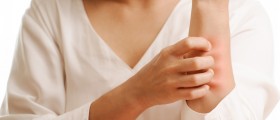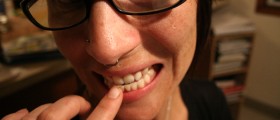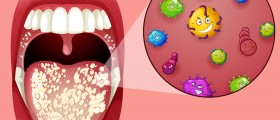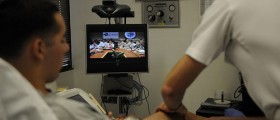
Skin fungal infection involves multiplication of microorganisms such as Dermatopythes in the surface layer of the skin, nails and hair when the special conditions are created. These infections includes ringworm, athlete's foot, jock itch, beard ringworm, scalp ringworm, nail ringworm and Candida. Although these infections affect only the superficial layer of skin, in certain cases they can deepen tackling the blood and internal organs.
There are several factors that increase the risk of fungal skin infections.
Firstly, long term use of antibiotics can destroy the good bacteria in the body creating the conditions for the accumulation of fungi.
Furthermore, corticosteroids used for treating skin inflammation and disorders can cause the reduction of the resistance of the immune system creating conditions for development of fungi.
In addition, people who suffer from certain chronic diseases such as diabetes, leukemia or AIDS are also due to weakened immune system more prone for developing these infections.
Since for the development of fungi warm and moist places are ideal conditions, sweaty wardrobe and shoes can significantly contribute to the development of fungi. Bearing this in mind, fungal infections can easily be caught in sauna and locker rooms.
In addition, some people are genetically predisposed for development of fungal infections, so when appropriate conditions are created these people are much easier and faster become infected.
Skin fungal infection manifestation will depend on its cause and type.
Ringworm occurs in the form of red or pink, slightly itchy rash in the form of rings with pronounced center.
Jock itch is also a ring-infection that affects the groin appearing as small, painful and extremely itchy blisters.
Athlete's foot is an itchy rash in the form of scales between the toes. Intensity of this infection can vary from moderate irritation to cracking and peeling of the skin when it becomes more susceptible to bacterial infections.
Scalp ringworm is especially popular among children.
Nail ringworm manifests as a thickening of toe nails, which can fall off.
Candida mostly affects hot and humid places such as skin folds. It appears in the form of red, painful and itchy clearly edged lesions, which borders have a tendency to peel.
If there is suspicion that the patient is infected with a skin fungal infection an accurate diagnosis can be set in two ways: potassium hydroxide preparation and fungal culture method.
If a fungal infection is caused by prolonged use of antibiotics and corticosteroids, its treatment involves currently interrupting using these drugs. Skin fungal infections are usually treated by antifungal creams and medicines for oral use of which fluconazole, itraconazole and terbinafine are mostly used. To relieve irritation and itching mild Hydrocortisone cream can be used. If fungal infection is quite advanced in bacterial infection using of antibiotics is recommended. In any case, fungal infection treats depending on its cause. This means that it is necessary to visit a doctor who will determine the cause of the infection and appropriate therapy.
Certain prevention measures can be taken to avoid skin fungal infections. The skin should be kept clean and dry. They should avoid sharing towels, clothes and items for personal hygiene since the fungal infection is transmitted. Clothes should be loose and made of cotton, allowing the skin to breathe. People with diabetes should regularly control their blood sugar levels.









_f_280x120.jpg)







Your thoughts on this
Loading...